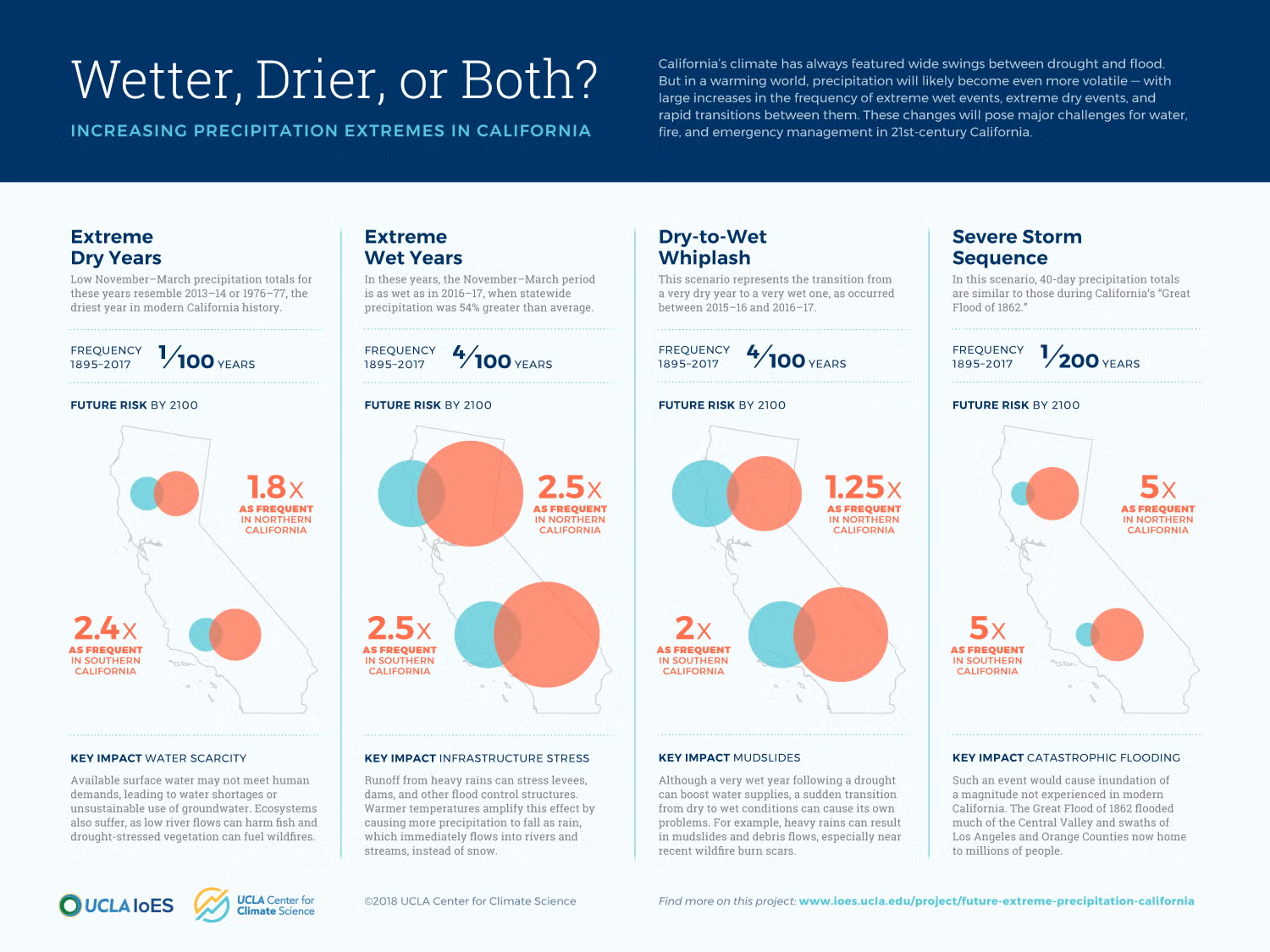
In the UCLA Sustainable LA Grand Challenge–funded project “The Future of Extreme Precipitation in California,” UCLA researchers at the UCLA Center for Climate Science are investigating the effects of climate change on extreme precipitation events in the state, including droughts and very wet periods.In California’s Mediterranean climate, the lion’s share of the precipitation that feeds our water supply falls in a short wet season between November and March – and it typically comes in a handful of intense storms. Because of this, the state’s reservoirs and other water infrastructure serve two purposes: to capture water for later use, and to prevent flooding downstream whenever possible. Each year, water managers perform a tricky balancing act. The system needs to collect enough water to supply users throughout the long dry season, while keeping space in reservoirs to catch heavy flows before they cause flooding.
Climate change promises to make managing California’s water even more challenging. Projections from global climate models — the computer simulation tools that inform the Intergovernmental Panel on Climate Change’s scientific assessments — lead researchers to expect that future precipitation in California will change. However, it’s unlikely the biggest change will be in overall amount of precipitation the state gets. Instead, it’s currently thought the character of precipitation will probably change, with more intense wet periods and longer dry spells between them. In other words, California’s already variable climate may become even more extreme.
In their latest findings — pictured above — the research team found that under a “business as usual” scenario of greenhouse gas concentrations, extremely dry and extremely wet events become more common over the course of this century. So do rapid transitions between very dry and very wet years.
This kind of information is critical to helping water managers prepare for the droughts and floods of the future.
For more information about the project, visit the Sustainable LA Grand Challenge Research Portal.
This is a guest post by Katharine Davis Reich, associate director for the Center for Climate Science.




